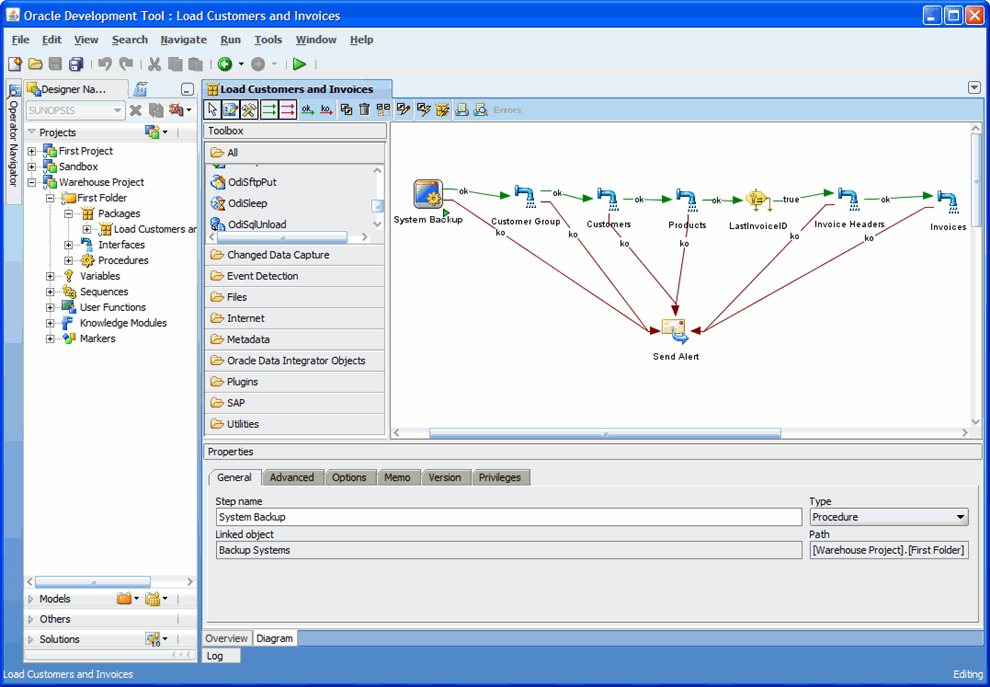Using variables and procedures in Oracle Data Integrator (ODI) allows you to create reusable and flexible data integration processes. Let’s explore how to use variables and procedures in ODI:
Using Variables:
- Declare Variables in Procedures:
- When creating a procedure in ODI, you can declare variables to store and manipulate values.
- Declare variables using the DECLARE statement within the procedure’s PL/SQL code.
- Specify the variable name, data type, and optional initial value.
- For example, to declare a variable named “v_employee_count” of type NUMBER with an initial value of 0:cal
DECLARE v_employee_count NUMBER := 0; BEGIN -- Procedure code goes here END;
- Assign Values to Variables:
- Variables can be assigned values using the assignment operator (:=) within the procedure.
- You can assign a static value or use expressions to calculate the value dynamically.
- For example, to assign the value 10 to the variable “v_employee_count”:
v_employee_count := 10;
- Use Variables in Procedures:
- Variables can be used within the procedure’s PL/SQL code to perform calculations, store intermediate results, or control the flow of execution.
- You can reference variables in SELECT statements, conditions, loops, or any other part of the PL/SQL code.
- For example, to use the variable “v_employee_count” in a SELECT statement:
SELECT * INTO some_variable FROM employees WHERE employee_count > v_employee_count;
Using Procedures:
- Create a Procedure:
- In the Designer Navigator, navigate to the project where you want to create the procedure.
- Right-click on the “Procedures” folder and select “New Procedure.”
- Specify a name and an optional description for the procedure.
- In the procedure editor, define the PL/SQL code that constitutes the procedure’s logic.
- Save the procedure.
- Call a Procedure:
- Procedures can be called from various components in ODI, such as interfaces, packages, or other procedures.
- To call a procedure, use the CALL statement followed by the procedure name and any required parameters.
- For example, to call a procedure named “proc_update_employees”:
CALL proc_update_employees;
- Pass Parameters to Procedures:
- Procedures can accept input and output parameters to facilitate data transfer and interaction with other components.
- Parameters are defined in the procedure’s signature and can be accessed within the procedure’s PL/SQL code.
- Parameters can be of various data types, such as VARCHAR2, NUMBER, or DATE.
- For example, to define a procedure with an input parameter:
CREATE OR REPLACE PROCEDURE proc_update_employees(p_employee_id IN NUMBER) IS BEGIN -- Procedure code goes here END;
- Return Values from Procedures:
- Procedures can have output parameters to return values back to the calling component.
- Output parameters are defined in the procedure’s signature and can be assigned values within the procedure.
- The calling component can access the returned values after the procedure execution.
- For example, to define a procedure with an output parameter:
CREATE OR REPLACE PROCEDURE proc_update_employees(p_employee_id IN NUMBER, p_employee_name OUT VARCHAR2) IS BEGIN -- Procedure code goes here p_employee_name := 'John Doe'; END;
By effectively utilizing variables and procedures in ODI, you can enhance the flexibility and reusability of your data integration processes, enabling dynamic calculations, parameterization, and modularization of logic.
SHARE
